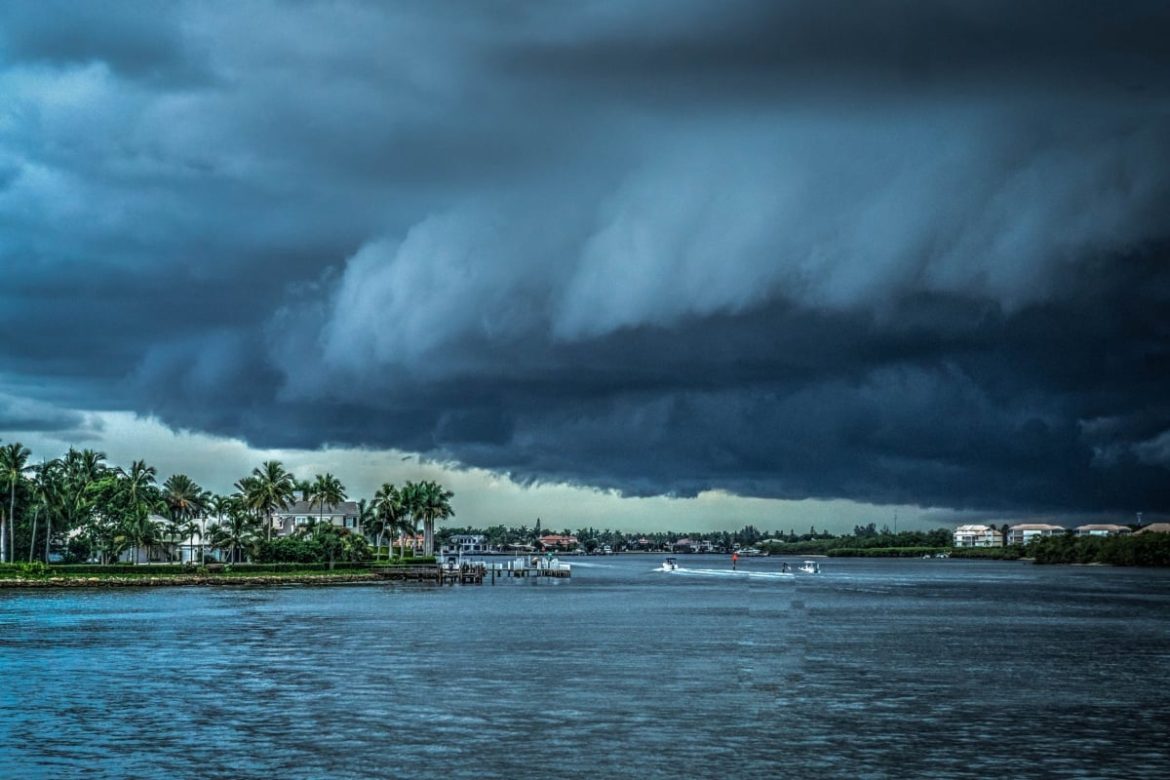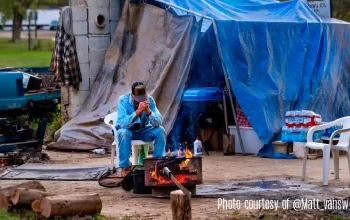Some of the links in this post may contain affiliate links for your convenience. As an Amazon Associate, I may earn a small commission from qualifying purchases without any increase in price to you.
Are you facing an approaching hurricane and feeling the familiar pre-storm jitters? Even hurricane veterans like myself can miss something! This article is your last-minute checklist for hurricane prepping. Whether you’re a seasoned prepper or a newcomer to hurricane season, this quick guide will whip your hurricane preparation into shape in just 48 hours.

It was a humid, warm day in 2020. Laura was simmering out there in the Gulf, and even though I’d been through this drill before (thanks, Hurricane Harvey!), the nerves always kick in. I started wondering, “Have I covered everything?” My family emergency communication plan was in place and I have emergency apps on my phone to get hurricane updates.
Here’s the thing: even after a big one like Harvey (which our town bore the brunt of), you learn there’s always room for improvement. No matter how well prepared we think we are, it takes just one major crisis of one sort or another to reveal weaknesses and gaps when it comes to being prepared. So, with 48 hours to go before Laura hits, I did a quick pre-storm scramble. Plus, I had to send a little hurricane prep care package to my son who was down by the coast (Doritos are a must, obviously!). This is the last-minute hurricane checklist I used to be confident and have peace of mind that I had covered the essentials.
Last-minute Hurricane Preparedness Checklist
Here are the things I did in the final 48 hours to prepare for the hurricane:
Solar Power and Backup Generator
- Ensure all solar panels are charged. Once they’re charged, There will be emergency power for our electronics, lanterns, and our emergency radio, among other things.
- Double-check to make sure the generator is ready to go with plenty of extension cords. One of my husband’s many careers is that of a Master Electrician, and when I asked him if we had enough extension cords, without hesitation he said, “Oh, yeah.” I should have known. The three major appliances I want to have powered up no matter what are the refrigerator, our big, upright freezer loaded with a couple of hundred pounds of meat, and the wall air conditioning unit in our bedroom. We could exist for quite a long time with those three appliances running. The solar panels take care of smaller devices.
Fresh Laundry and Meals
- Fill about half a dozen gallon-size Ziploc bags with water, and once they’re frozen, slip them into small nooks and crannies in the freezer. This helps keep the freezer’s temperature cold just in case the generator fails (please, God, don’t let that happen!) Plus, if you need ice to see you through some particularly hot days, you’ll have those as an extra resource. Alternatively, you could plan to use one of these two ways to quietly run a freezer during a power outage.
- Run your washer and dryer to make sure everything you wear is freshly clean. That way doing laundry in a power outage and/or a post-hurricane clean-up won’t be a concern for at least a week or more. Otherwise, have one of these three methods to wash laundry without electricity ready to go.
- Cook several meals to keep on hand. You’ll want meal prep to be the least of our concerns, regardless of what happens. Also have several off-grid cooking methods ready to go , plus other kitchen items that don’t require power. In my food storage pantry, I have the best foods for a hurricane kit.
- Run the dishwasher and wash pots and pans immediately after use for the same reason. In a crisis, the best plan will be the simplest one. Therefore, freedom from any chores that typically require appliances and, especially, hot water, is a priority. Conservation is critical so that your water storage lasts as long as possible.
Fueling Up and Electronics
- Top off the gas tanks of our vehicles and refilling gas cans with fresh gasoline. Gas is always in short supply with hurricanes, and if you need to evacuate there may not be fuels available along any of your planned evacuation routes. By the way, if your stored gasoline has become too old to be useful, some hardware stores may be able to dispose of it for you. Brush up on liquid fuel safety here.
- Make sure all electronic devices are fully charged. That includes anything capable of being solar charged but is also USB-powered. USB is much quicker; use it while you can.
Remember Pets
FAQ
Double-check your hurricane kit (food, water, meds, radio, flashlights), secure your home, fill gas tank, pre-cook meals, do laundry, charge electronics, and assemble a pet emergency kit.
The Centers for Disease Control and Prevention (CDC) recommends storing 1 gallon of water per person per day for at least 3 days. This includes water for drinking, cooking, and sanitation. Don’t forget to factor in the needs of pets when calculating your water storage! The Survival Mom recommends 2 gallons per person per day. Learn more about basic water storage.
A full freezer can stay cold for up to 48 hours if the door stays closed. A half-full freezer will only hold food for about 24 hours. Discard any food that has thawed and reached an unsafe temperature (above 40°F for 2 hours).
Related Hurricane Preparedness Content
FREE Power Outage Survival Handbook
Don’t let a power outage catch you off-guard. My guide, The Family Power Outage Survival Handbook, prepares you and your family for surviving without electricity whether the next outage happens in summer or winter weather.
Final Thoughts
Hurricane warnings offer a precious window for last-minute preparations. With 48 hours on the clock, it’s crunch time to double-check and ensure everything’s in order. Focus on essential tasks like pre-cooking meals and tackling laundry while the power’s still on. These proactive steps will significantly reduce stress and create a more comfortable environment when the storm arrives.
What else should I have on my list that I may be overlooking?






